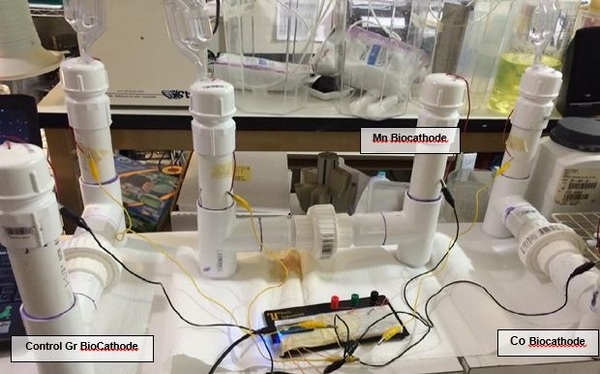The Effect of Cobalt Biomineralization on Power Density in a Microbial Fuel Cell
(1) Bellarmine College Preparatory High School, San Jose, CA, (2) Schmahl Science Workshops, San Jose, CA
https://doi.org/10.59720/15-019
Microbial fuel cells produce electricity while breaking down organic waste. However, they have low power output because of the poor kinetics of oxygen reduction at the cathode under neutral pH conditions. In this project, we developed a novel microbial fuel cell with a biocathode using cobalt oxidation and reduction, to determine whether a cobalt biocathode could increase power density more than the conventional manganese biocathode. We built three types of fuel cells; the control had only oxygen reduction in the cathode chamber. The second and third cells included manganese and cobalt, respectively, with oxygen reduction. Shewanella oneidensis was used to oxidize organic material at the anode chamber and Leptothrix cholodnii was used in the biocathode. We measured power output when the fuel cells had reached peak voltage under a limited glucose supply. We found that the cobalt biocathode resulted in a higher power density than the control group and the manganese biocathode, but took the longest to reach peak voltage, indicating that microbial biofilm formation takes longer when oxidizing cobalt than it does when oxidizing manganese.